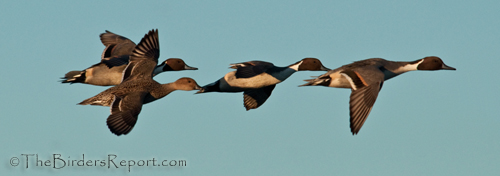 Northern Pintails In Flight photos by Larry Jordan
Northern Pintails In Flight photos by Larry Jordan
Remember last week I told you that I had reserved a photo blind at Sacramento National Wildlife Refuge? There were hundreds of Northern Pintail ducks at the refuge and after spending hours in the blind waiting for birds to come a little closer, I decided to work on “in flight” photos. But let’s start at the beginning of the day.
Before day break I was greeted by a couple of Great Horned Owls hooting from the trees as I walked toward the blind. I caught the outline of one of them high up in a tree just before leaving the road to walk the shallow water pathway to my hide.
It was a beautiful, sunny and cool morning with a slight breeze, blowing in from the North. I could see scores of Greater White-fronted Geese, White-faced Ibis, Black-necked Stilts, various ducks and even some Herring Gulls in the distance but the only birds that decided to come in close to the snag and the logs placed near the blind by the refuge staff were this Brewer’s Blackbird, a few Red-winged Blackbirds and a Black Phoebe that kept me company for awhile.
There were many Greater White-fronted Geese and ducks by the score. As time passed, the birds began coming closer to the blind and eventually I got some chances a the Black-necked Stilts that were feeding in the shallows. There were adults and juveniles and I enjoyed watching them weave between the slumbering ducks.
There was a Northern Harrier cruising over the marshes giving me good looks through the bins as she dropped down into the thick bulrushes; then fly back up, still looking for some delicacy. She was too far off for a decent photo however.
Then, all of a sudden, the birds began squawking and on cue, leaped into flight en masse. I also was alerted as a pair of Red-tailed Hawks flew right over the blind (from behind) giving me no time to reset the camera for photo ops.
This is what prompted me to begin looking for “in flight” opportunities, and there were many. As I said, Greater White-fronted Geese were plentiful
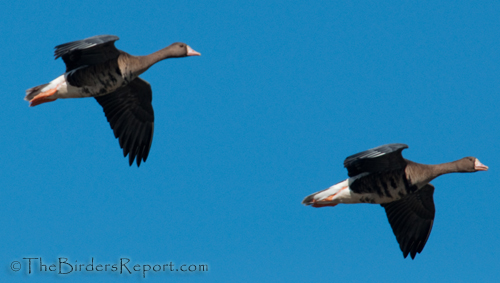 and there were Gadwall
and there were Gadwall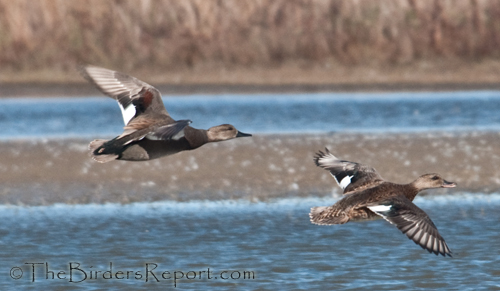 Northern Shovelers
Northern Shovelers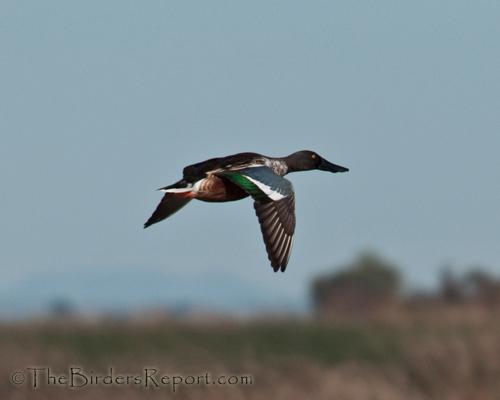 American Wigeon
American Wigeon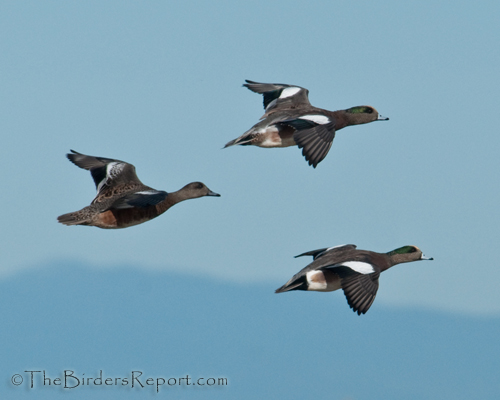 and Cinnamon Teal.
and Cinnamon Teal.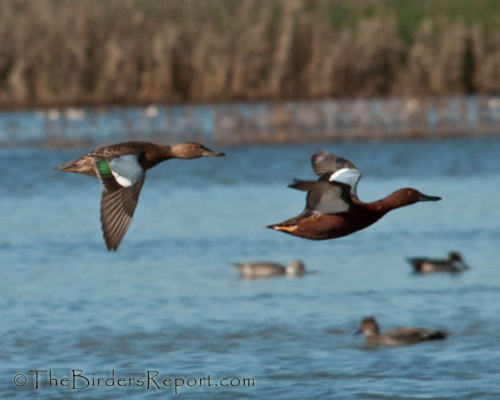
There were also Ring-necked Ducks flying in and these Long-billed Dowitchers I spotted on the way out, feeding with the Black-necked Stilts.
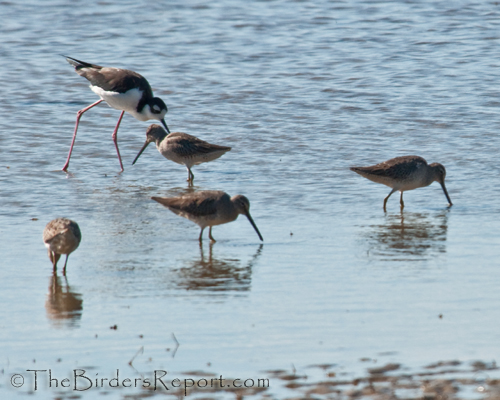
I left the blind before noon as the wind picked up and the birds settled down. Off the back of the observation platform I spotted a Yellow-rumped Warbler
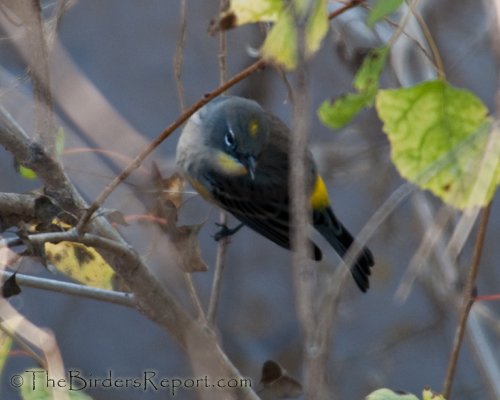
Then, heading back toward the visitor’s center, I passed a Red-tailed Hawk and this Red-shouldered Hawk that was hiding from the wind.
Heading down the backstretch of the refuge there are several huge ponds where the Snow Geese were hanging out with still more Greater White-fronted Geese. As I stopped to study the flocks briefly, looking for the odd Ross’s or Blue Goose or maybe a Eurasian Wigeon, on some signal unknown to me, the flocks of hundreds sprang into the air and began swirling around the ponds.
I watched as an immature Bald Eagle flew through the crowd and landed something in the tall grass for lunch.

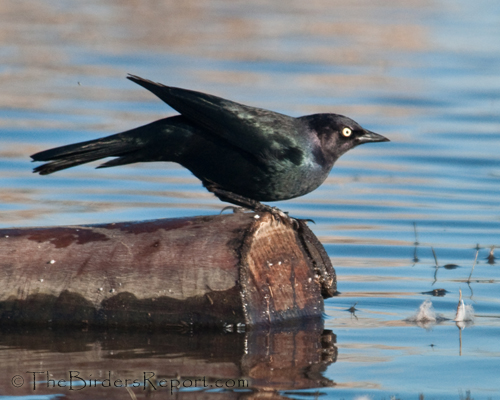
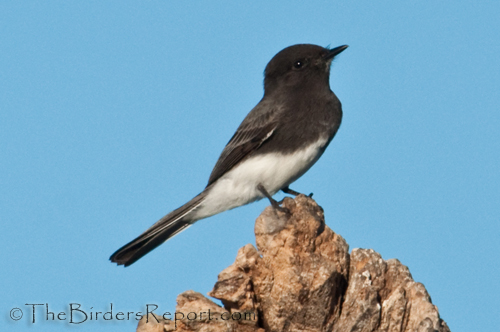
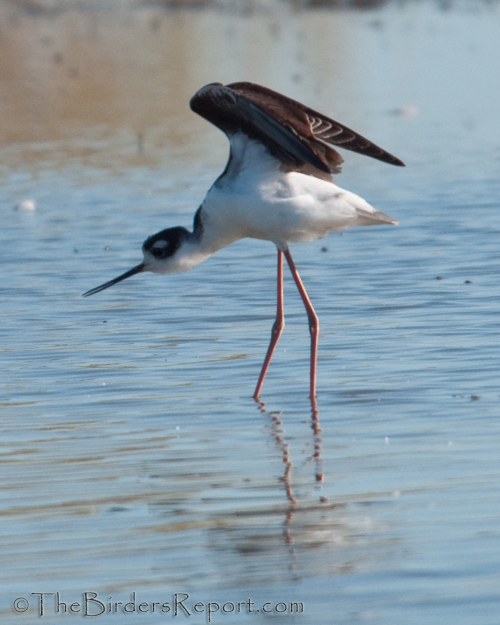
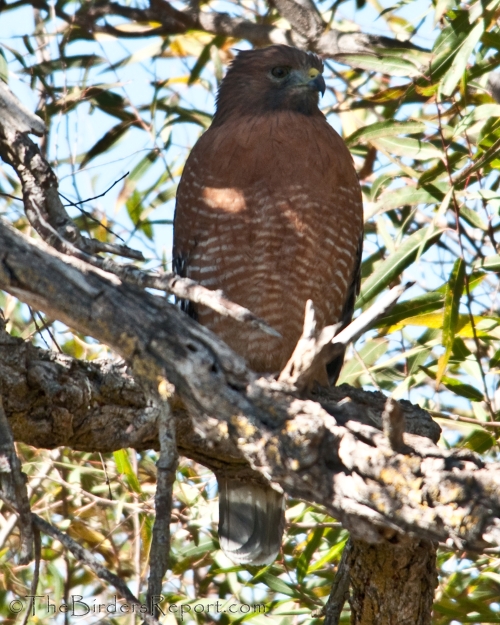
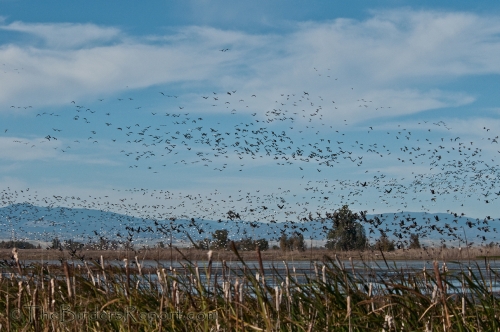
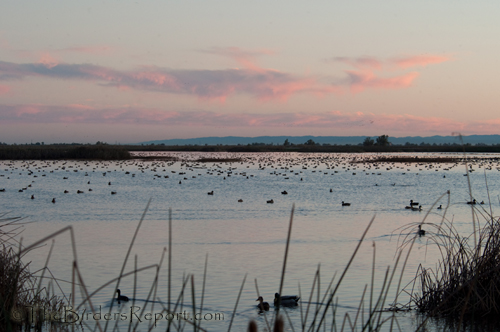
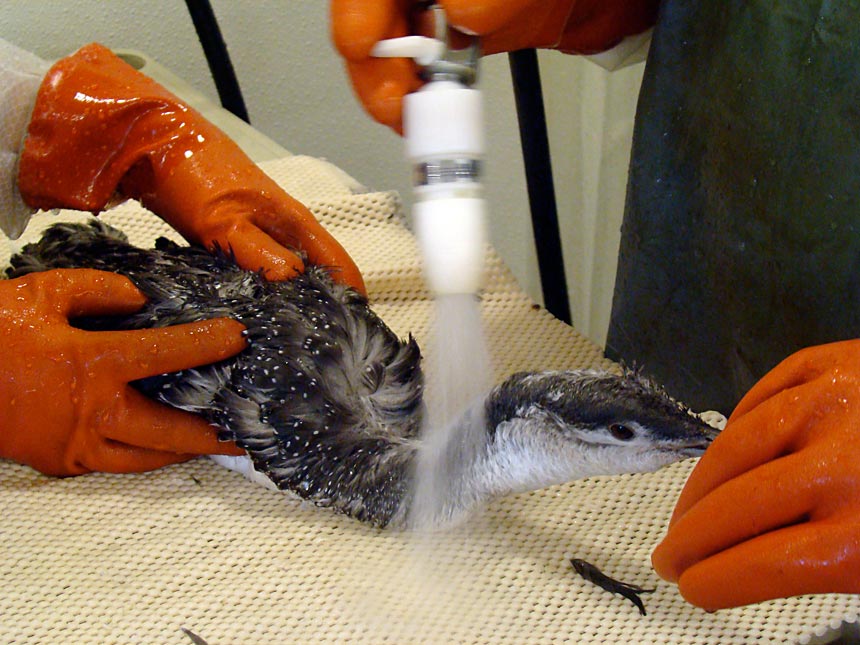
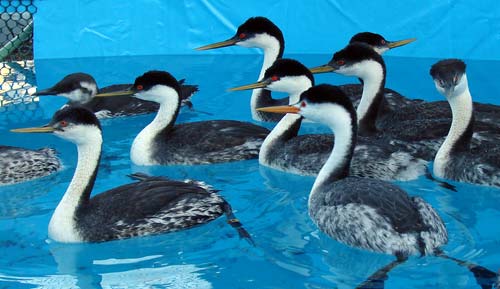
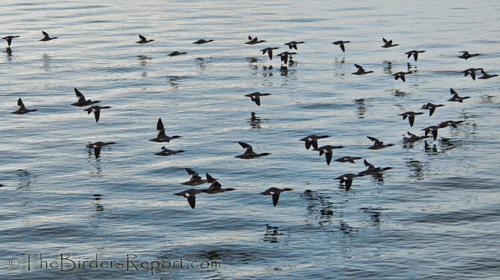 Common Mergansers Skimming the Water at Clear Lake photos by Larry Jordan
Common Mergansers Skimming the Water at Clear Lake photos by Larry Jordan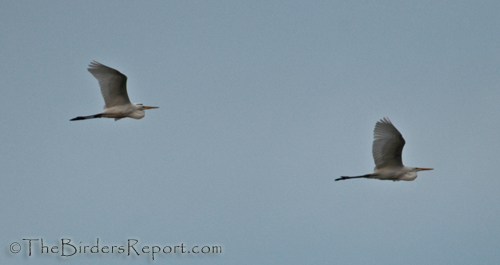 Great Egrets Flying Overhead
Great Egrets Flying Overhead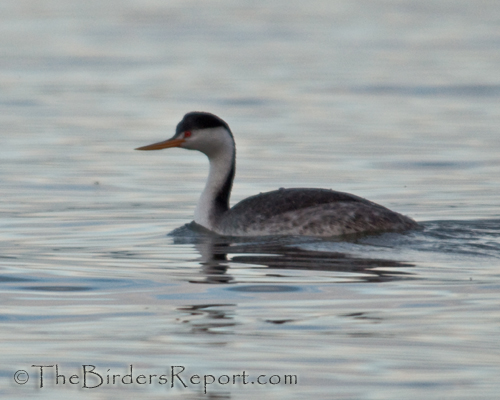
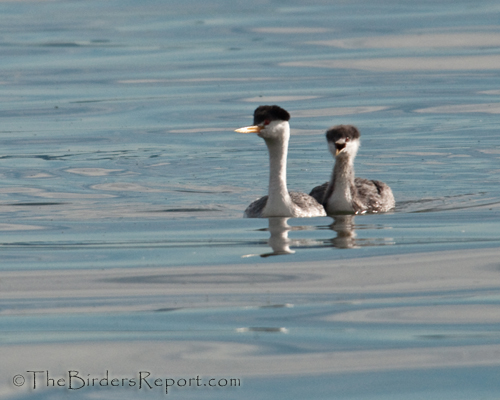
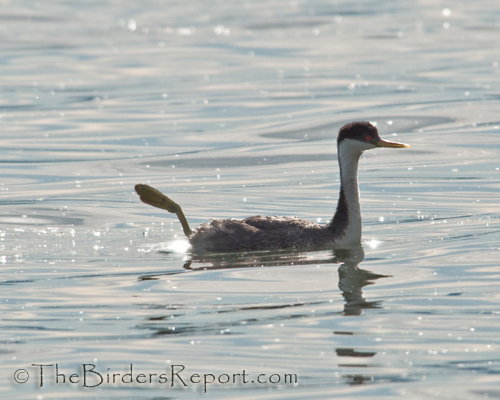
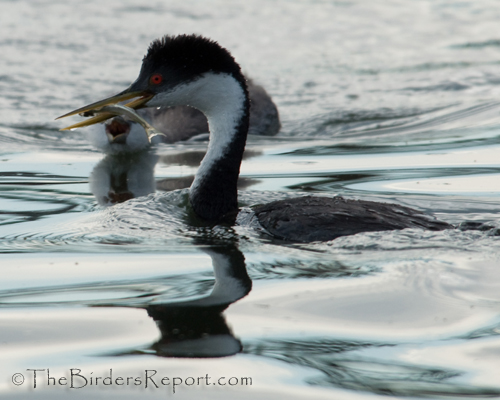
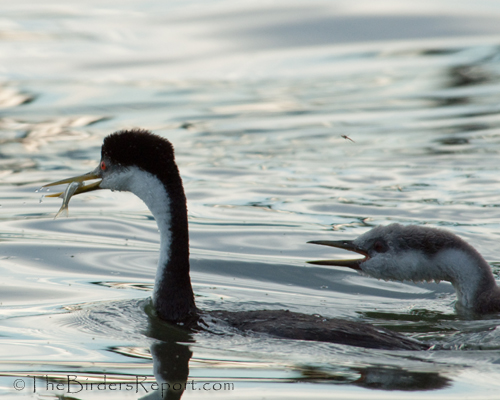
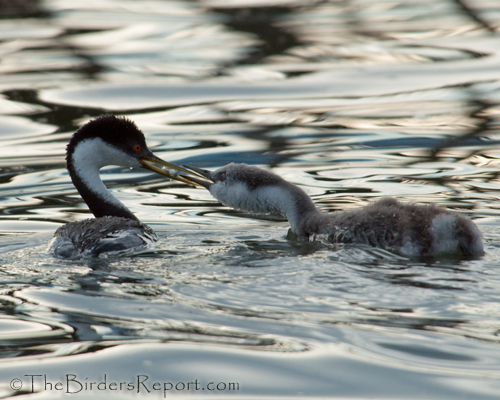
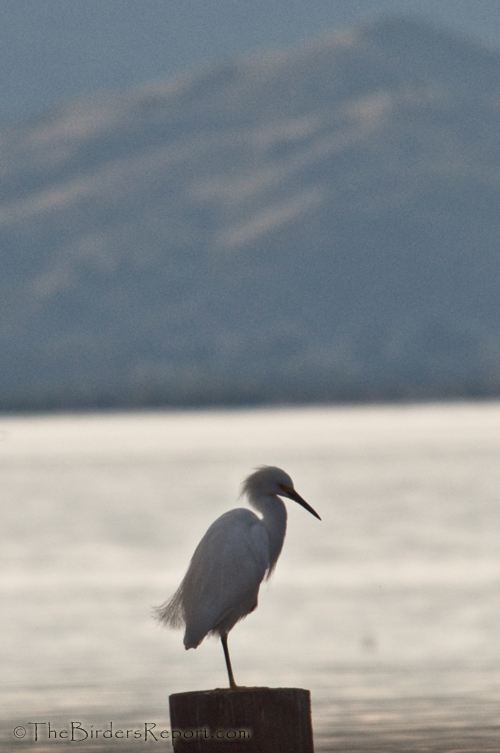



Social Media Connect